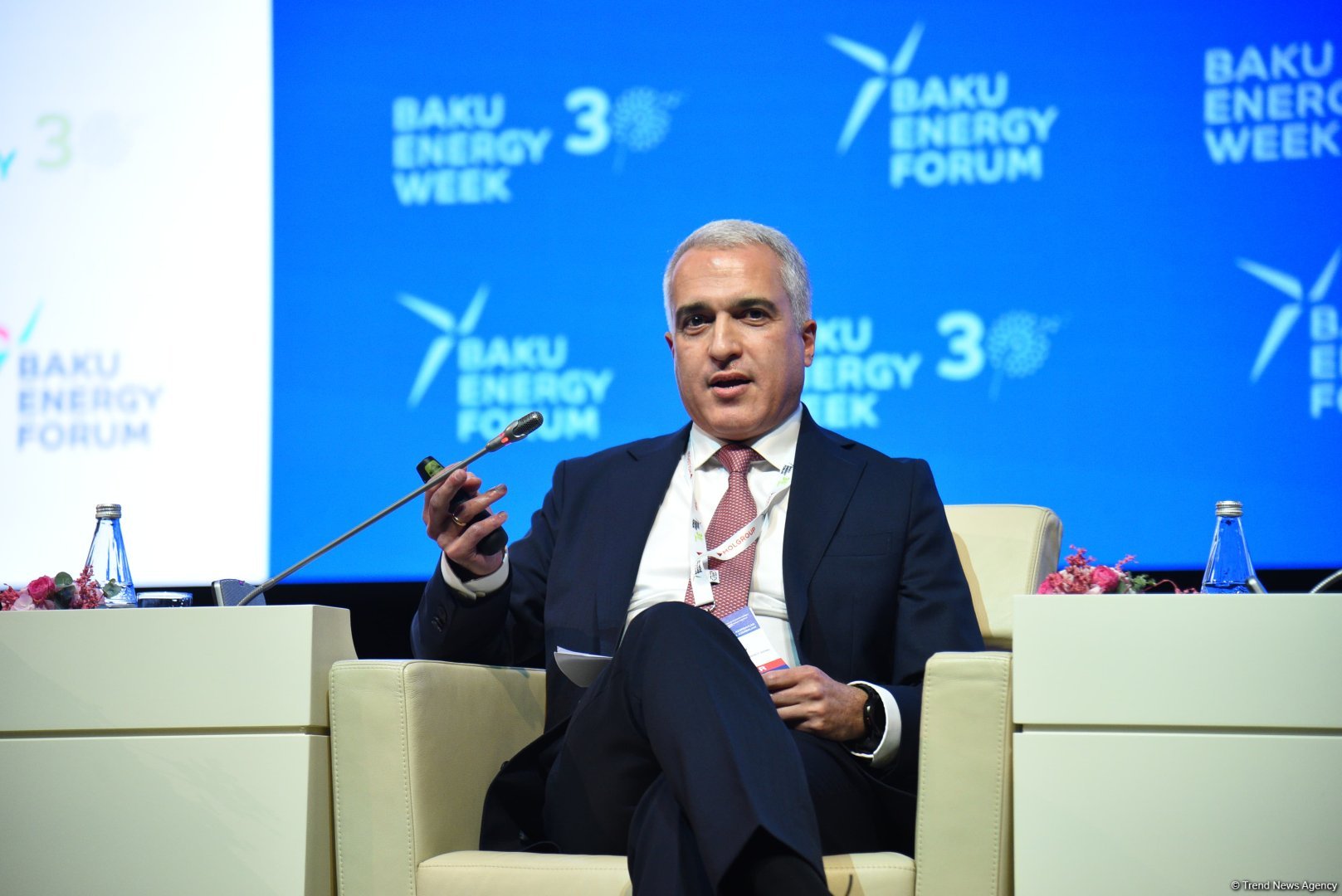BAKU, Azerbaijan, June 4. Azerbaijan is at a pivotal moment that demands both focused attention and decisive action regarding its energy production and grid infrastructure, said Samir Akhundov, Chairman of the Board of Directors, Chairman of the Board of the Energy Regulatory Agency of the Republic of Azerbaijan (AERA), Trend reports.
In his speech at the session on "Electricity Generation and Grid Infrastructure Development: Powering Tomorrow’s World" at the 30th Anniversary Baku Energy Forum, Akhundov noted that the country must reconsider not only how energy is generated but also how it is delivered, as rising global demand challenges existing systems. The future of global energy supply will depend on commitments to decarbonization, innovation, sustainability, and economic growth.
Akhundov noted that Azerbaijan’s current installed energy capacity exceeds eight gigawatts, with most of the output coming from conventional, gas-fired thermal power plants
"Currently, the bulk of Azerbaijan’s energy production comes from conventional gas-fired thermal power plants. However, this is set to change rapidly. In the coming years, more than thirty percent of newly installed capacity will come from renewable sources. And this is only the beginning. Azerbaijan possesses vast renewable energy potential, with technical capacity estimated at 135 gigawatts onshore and 157 gigawatts offshore. The country’s economic potential is also substantial, with twenty-seven gigawatts onshore and thirty-eight gigawatts offshore.
To unlock this potential, several major projects are already underway, and steady, large-scale growth in the sector is anticipated in the years ahead," he said.
The Chairman highlighted that the global renewable energy sector reached a significant milestone in 2024, with over 90 percent of all newly added capacity coming from renewable sources. He emphasized that this shift reflects a powerful global trend:
“I want to underscore that the majority of new capacity added last year—more than 90 percent—was from renewable energy. This is not only impressive but also a promising indicator of the ongoing global transformation.”
Azerbaijan, with its substantial renewable energy potential, is poised to follow a similar trajectory. Future increases in generation capacity are expected to come predominantly from renewable sources, eventually surpassing traditional energy generation.
However, the Chairman stressed that the success of this transition depends heavily on the strength and resilience of the national electricity grid. A robust and reliable transmission infrastructure is essential for integrating large volumes of renewable energy into the system," he added.
Akhundov emphasized that the transmission network in Azerbaijan is owned and operated by a state energy enterprise, which is also responsible for electricity generation and dispatch:
“The transmission network includes lines ranging from 110 kV to 500 kV. Lines below 110 kV are managed by another state-owned enterprise, Azerishig OJSC.
Azerbaijan also maintains electricity connections with its neighboring countries — Russia and Georgia to the north, Türkiye to the west, and Iran to the south. Currently, the national grid operates without congestion or resource shortages. However, studies conducted by international consulting firms indicate that strengthening the network is essential to accommodate the large-scale integration of renewable energy.
To address this need, several projects are underway to construct new substations and transmission lines, expand existing infrastructure, and develop battery energy storage systems (BESS).
“Solar and wind energy are inherently variable, meaning their output is not constant. Battery systems play a crucial role in integrating these sources into the grid. They ensure stability by reducing peak-hour loads, regulating frequency, and minimizing energy losses. This is particularly important under the power purchase agreements (PPAs) signed with foreign investors. While the contracts allow for a limited number of power outages, exceeding this threshold triggers compensation obligations for unused energy. Battery systems help mitigate these risks by storing excess electricity.
If frequency is lost, the grid can collapse, potentially leading to a total power outage — a blackout. For this reason, the creation of battery storage systems is the top priority before integrating the planned 2 gigawatts of renewable energy by 2027. The first battery project, with a capacity of 250 megawatts, has already been launched and is currently in progress," Akhundov concluded.
Stay up-to-date with more news on Trend News Agency's WhatsApp channel







